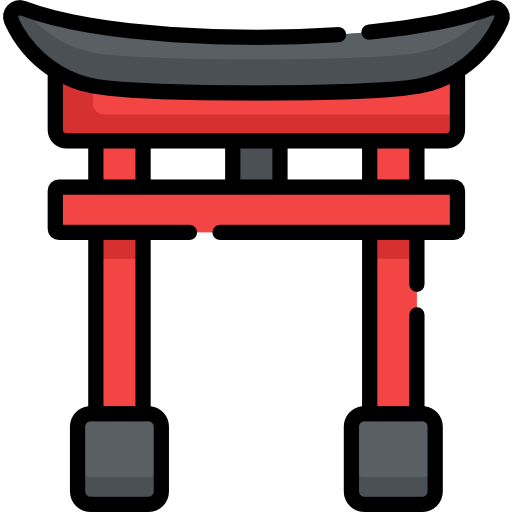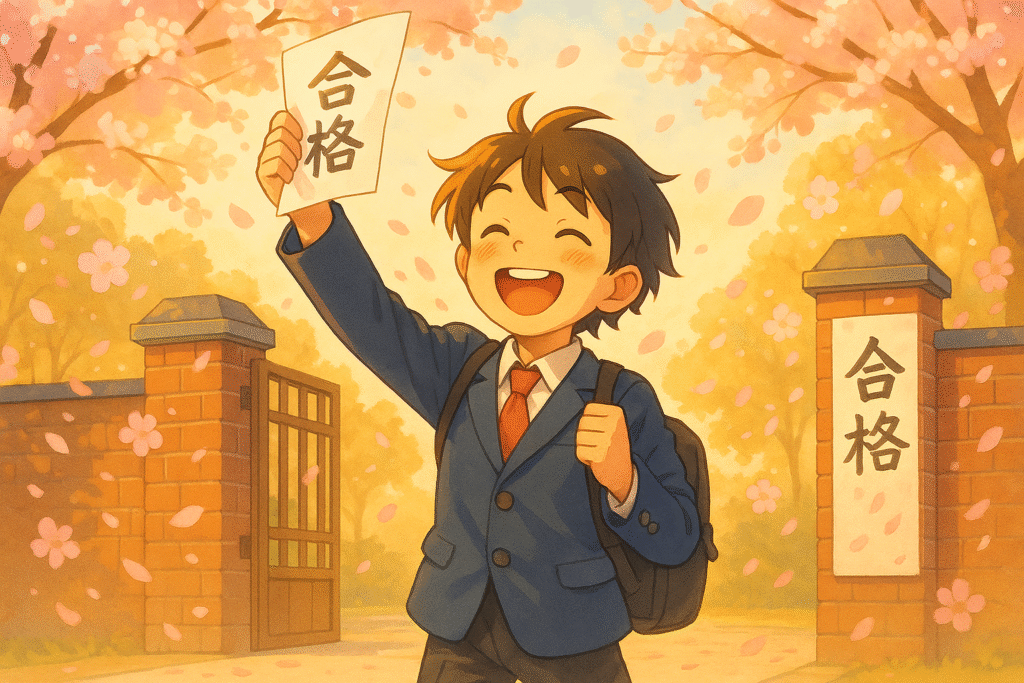Have you ever found yourself puzzled by the “-san” or “-kun” attached to names while watching your favorite anime? Or perhaps you’re preparing for your first business trip to Tokyo and want to avoid an awkward social faux pas? Understanding Japanese honorifics is your gateway to navigating the complex social landscape of Japan with confidence and respect.
Japanese honorifics are more than mere title additions—they’re essential linguistic tools that communicate social relationships, respect levels, and cultural awareness. Unlike English, where titles like “Mr.” or “Mrs.” appear occasionally, Japanese culture weaves these respectful markers into the fabric of daily conversation.
Want to start learning Japanese right away?
Access our Free Study Guides with grammar explanations, vocabulary lists, and study tips. All at no cost.
Why Japanese Honorifics Matter in Communication
In Japan, addressing someone without the appropriate honorific can be as jarring as calling your university professor by their first name on the first day of class. These linguistic markers serve critical social functions:
- They establish and acknowledge hierarchical relationships
- They signal the level of familiarity between speakers
- They demonstrate cultural awareness and respect
- They help navigate complex social situations appropriately
For foreigners learning Japanese, mastering honorifics is a powerful way to show respect for Japanese culture and build meaningful connections. Even using basic honorifics correctly can make a significant difference in how you’re perceived.
Before diving deeper, check out our Japan Travel Budget Planner to prepare for your next trip while learning to use these honorifics in real-world contexts!
The Most Common Japanese Honorifics Decoded
Let’s explore the essential Japanese honorifics you’ll encounter in everyday conversations, with practical examples to help you use them confidently.
さん (-San): The Universal Respectful Suffix
Usage Level: Everyday, universal respectful address Meaning: Equivalent to Mr., Mrs., Miss, or Ms., but used much more frequently When to Use: With colleagues, acquaintances, customers, and in most formal and informal situations
“-San” is the most versatile Japanese honorific and your safest option when unsure which suffix to use. It’s gender-neutral and appropriate for nearly all social contexts.
Example:
- 田中さん、おはようございます。
- Tanaka-san, ohayou gozaimasu.
- “Good morning, Mr./Ms. Tanaka.”
Cultural Note: Unlike in Western cultures, “-san” is commonly used with both first and last names, though using it with last names is more formal.
さま (-Sama): The Honorific of Deep Respect
Usage Level: Very formal, showing high respect Meaning: Shows deep reverence or acknowledges higher status When to Use: For customers (as service staff), people of high status, in formal letters, addressing deities
“-Sama” elevates the addressed person to a position of honor and indicates significant respect.
Example:
- お客様はこちらでお待ちください。
- Okyaku-sama wa kochira de omachi kudasai.
- “Dear customer, please wait here.”
Cultural Note: Using “-sama” for yourself would be considered extremely arrogant and inappropriate.
くん (-Kun): The Casual Male-Oriented Suffix
Usage Level: Casual to semi-formal Meaning: Friendly, familiar address typically for males When to Use: By seniors to male juniors, between male friends, by teachers to male students
While primarily used for males, “-kun” can sometimes be used for females in specific contexts like workplace settings.
Example:
- 佐藤くん、この書類を確認してください。
- Satou-kun, kono shorui wo kakunin shite kudasai.
- “Satou, please check these documents.”
Japanese kun meaning goes beyond just a suffix—it often signifies a relationship where the speaker has some seniority or authority over the person being addressed, while maintaining a friendly tone.
ちゃん (-Chan): The Affectionate Diminutive
Usage Level: Casual, intimate Meaning: Endearment, affection, or cuteness When to Use: For children, close friends (especially female), pets, lovers, younger family members
“-Chan” conveys warmth and affection, but should only be used when a familiar relationship has been established.
Example:
- まりちゃん、一緒に公園に行こう!
- Mari-chan, issho ni kouen ni ikou!
- “Mari, let’s go to the park together!”
Cultural Note: Using “-chan” for someone you’ve just met can be seen as condescending or overly familiar.

せんせい (-Sensei): The Title of Mastery
Usage Level: Formal respect for professionals Meaning: “One who has come before” or “teacher” When to Use: For teachers, doctors, lawyers, artists with recognized mastery, politicians
Unlike other Japanese suffixes, “-sensei” can be used both as a suffix and as a standalone title.
Example:
- 木村先生、質問があります。
- Kimura-sensei, shitsumon ga arimasu.
- “Teacher/Doctor Kimura, I have a question.”
Common Mistakes to Avoid with Japanese Honorifics
Even advanced Japanese learners can stumble when using honorifics. Here are key pitfalls to avoid:
1. Using Honorifics for Yourself
Perhaps the most fundamental rule: never attach honorifics to your own name. This would be considered extremely arrogant in Japanese culture.
Incorrect: 私は田中さんです。(Watashi wa Tanaka-san desu.) Correct: 私は田中です。(Watashi wa Tanaka desu.)
2. Dropping Honorifics Too Soon
Removing an honorific before the relationship has developed that level of closeness can appear presumptuous. Wait until you’re explicitly invited to use a more familiar form of address.
3. Mixing Casual Speech with Formal Honorifics
Using very casual language with formal honorifics (or vice versa) creates an awkward, unnatural impression.
Awkward: 鈴木さま、何してる?(Suzuki-sama, nani shiteru?) Better: 鈴木さま、何をなさっていますか?(Suzuki-sama, nani o nasatte imasu ka?)
Beyond Basic Honorifics: Special Cases
Japanese honorifics extend beyond the common suffixes to include specialized terms and prefixes.
Honorific Prefixes: お (O-) and ご (Go-)
These prefixes attach to nouns and verbs to elevate the politeness level:
- お (O-): Generally used with native Japanese words
- お水 (omizu) – water
- お名前 (onamae) – name
- ご (Go-): Generally used with words of Chinese origin
- ご家族 (gokazoku) – family
- ご説明 (gosetsumeI) – explanation
Professional Titles as Honorifics
In workplace settings, job titles often replace or accompany standard honorifics:
- 社長 (shachō) – company president
- 部長 (buchō) – department head
Example:
- 田中部長に報告します。
- Tanaka-buchō ni houkoku shimasu.
- “I’ll report to Department Head Tanaka.”
Love Japan? Stay in the Loop!
Hi, I’m Jesse! Join 100+ learners and get my best Japanese learning tips straight to your inbox.
Japanese Honorifics in Different Contexts
The appropriate honorific often changes depending on the social environment:
In the Workplace
Japanese workplaces typically follow hierarchical structures reflected in honorific usage:
- Superiors address subordinates with “-kun” or “-san”
- Subordinates use “-san” or title+san for superiors
- Colleagues of equal rank typically use “-san” with each other
In Educational Settings
Schools and universities have their own patterns:
- Students address teachers as “-sensei”
- Teachers call students by last name + “-kun” (boys) or “-san” (girls)
- Students typically use “-san” with classmates
In Family and Friend Groups
Among close relations, the rules become more flexible:
- Family members might use no honorifics or use “-chan” for younger members
- Friends often use “-chan” or “-kun” based on gender and closeness
- Special terms like おばあちゃん (obāchan) for grandparents
As we’ve explored in our guide to Mastering Japanese Greetings, honorifics combine with appropriate greetings to form the foundation of respectful communication in Japan.
Japanese Honorifics in Modern Culture
While traditional honorific usage remains important in Japan, some modern contexts show evolution:
- Younger generations sometimes use honorifics more flexibly
- Some workplaces are adopting less hierarchical communication styles
- International influence has led to contexts where honorifics may be less emphasized
However, even in contemporary Japan, understanding basic honorific usage remains essential for effective communication and showing respect.
Learning and Practicing Japanese Honorifics
For non-native speakers, here are practical strategies to master Japanese honorifics:
- Listen carefully to native speakers in different social contexts
- When in doubt, use -san as it’s the safest option in most situations
- Practice role-playing different scenarios with a language partner
- Ask for feedback from Japanese friends or teachers
- Study set phrases with their appropriate honorifics
Looking to improve your Japanese language skills further? Our Free Study Guides offer comprehensive resources for mastering essential Japanese grammar, vocabulary, and cultural nuances!
Q&A: Your Japanese Honorifics Questions Answered
Q: What is the most commonly used Japanese honorific? A: The most commonly used Japanese honorific is “-san,” which is versatile, gender-neutral, and appropriate for most casual and formal situations.
Q: Is it rude to use someone’s name without an honorific in Japanese? A: Yes, addressing someone without an honorific is generally considered rude unless you have a very close relationship or have been explicitly invited to do so.
Q: Can I use “-chan” for anyone I think is cute? A: No, “-chan” should only be used for people with whom you have an established close relationship. Using it for strangers or new acquaintances can be seen as condescending or inappropriately familiar.
Q: How do I know which honorific to use with someone? A: When unsure, “-san” is almost always a safe choice. Pay attention to how others address the person, consider your relationship to them, and adjust based on social context.
Q: Do Japanese people use honorifics when speaking English? A: Some Japanese people may carry over honorific habits when speaking English, occasionally adding “-san” after names. However, most understand that English uses different conventions.

Conclusion: Embracing the Cultural Richness of Japanese Honorifics
Understanding Japanese honorifics is more than memorizing suffixes—it’s gaining insight into Japan’s deeply rooted values of respect, social harmony, and interpersonal awareness.
By mastering these linguistic markers, you not only improve your Japanese language skills but also demonstrate cultural sensitivity that opens doors to more authentic connections. Whether you’re planning to visit Japan, conduct business with Japanese partners, or simply deepen your appreciation of Japanese media and culture, proper honorific usage will significantly enhance your experience.
As you continue your language journey, remember that learning Japanese honorifics is a step-by-step process. Be observant, respectful, and willing to adapt, and you’ll find yourself navigating Japanese social contexts with increasing confidence and ease.
Want to discover more about Japanese culture? Check out our articles on Japanese Restaurants Near You or explore the creative influence of Michelle Zauner and Japanese Breakfast!
Have you had any interesting experiences with Japanese honorifics? Share your stories in the comments below!
Connect with Fellow Japanese Learners!
Ask questions, get study tips, and take part in weekly challenges. Join a community of motivated learners exploring both the language and culture of Japan!




